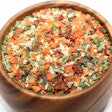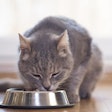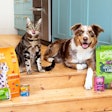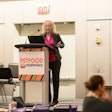The last few years have shaped the petfood industry in significant ways. Pet humanization has expanded the world of pet care, and premium products reflecting that trend are having their time in the spotlight. Uncertain economies have led to plateaus in the growth of mature markets, while developing markets continue to gain ground through their growing consumer bases. Ever-evolving regulations mean that petfood manufacturers are taking a closer look than ever at their practices, wanting to be prepared for the eventual implementation of new rules.
Given this current landscape, where is the industry headed in 2015?
The premium petfood market isn’t going away, say industry experts, and in fact will be the surest bet for segment growth in 2015, whether the market in question is mature or still developing. “With investments from the industry concerning product quality and consumer awareness, people have started to care more about their animals and providing higher quality food,” says Abinpet, the Brazilian Association of the Industry of Products for Pets. “Over 30% of the 2.4 million tons of petfood in 2014 [in Brazil] was premium food. In 2013, estimated growth was 3%.”
The underlying trend of humanization will continue to drive launches of culinary and luxury products, says SPF Market Trends Specialist Hélène Audic. These premium products will continue to highlight the consumer needs of 2014, with characteristics such as grain-free, high protein, low-carb and limited ingredients maintaining center stage. “The grain-free trend will remain mainstream, associated with the usage of alternative protein and exotic ingredients for more diet diversity and to reduce impact on livestock farming,” says Audic.
Alternative proteins are definitely something to consider in 2015, as consumers cater more and more to their pets’ specific needs. “Alternative protein sources will be found and used; notably insect-protein,” says Marcel Blok, owner of Change Stranamics BV. “And I expect a growing importance of the use of fish protein.”
The desire to make sure every pet has exactly what they need to be happy and healthy will split off into two main directions in 2015, says the industry. One of these paths heads towards going “back to basics” with limited ingredients and fresh, frozen and raw petfoods. “We believe we will continue to see an emphasis on quality ingredients moving more and more to mimic the movements in human food,” says Mark Liberman, vice president of sales and marketing at Peel Plastics Products Ltd. “Smaller ingredient panels (a shorter list) seem to remain important to the pet parent.”
Just as in the human food world, organic, natural and GMO-free will be the key words for this trend of simplifying petfood. “The 2015 buzzword will probably be ‘naturality’ in every possible way, especially in mature markets,” says Audic. “More than just what ‘limited additives and preservatives’ offer, pet owners aspire to go back to basics. The first position will be on the recipes with ‘wild’ brands and limited ingredient diets. Alternative technologies as freeze-dried, fresh food and raw frozen food will probably constitute the second one.”
The other path leads somewhere requiring even further catering to individual pets: customization. “As for trends on the rise, customization might become the new buzzword, particularly if [products like] Just Right (by Purina) are as successful as expected,” says Paula Flores, head of pet care research at Euromonitor International. “I would assume other players will follow suit.”
SPF is also predicting the growth of customization. “Petfood innovations may be more and more oriented on ‘made-for-me’ solutions,” says Audic. “As [pet owners] want tailored product choices and customized food for themselves, they will be waiting for the same personalized offer for their companion.”
Across the board, petfood industry experts are touting the continued growth of treats in 2015—especially snacks that fit into the broader trends being seen in petfood. Functional treats will definitely trend in 2015, says Blok. Thomas Meyer, the secretary general for FEDIAF (The European Pet Food Industry Federation), also says he expects the treats and snacks segment to grow.
Tom Willard, PhD, with TRW Consulting Services LLC, draws a link between the rise in high-meat formulas with the treats expected to be on the market in 2015. “High-meat dry formulas will continue to grow,” says Willard. “Meat not only has consumer support, but it also improves palatability and digestibility in both dogs and cats.” The natural expansion of that desire for healthy pets is in treats. “High-meat treats, both baked and jerky, will dominate this segment,” says Willard. New forms of treats, such as the gelatin and gummy types prominent in human food, are also worth looking out for, he says.
Market-wise, the petfood industry is expecting to see slow growth in mature markets, although premium products are expected to be the exception in all areas, while developing markets continue to gain in spite of uncertain economies around the world. “We see a flat total market in the EU for the year, but within in the numbers there are some fluctuations: As the value per bag on the mid-field premium brands are spinning downwards, the total value of the market is maintained by the growth within specialty brands,” says Christian Degner-Elsner, founder of Essential Foods. “Central European countries will continue to outgrow more established markets.”
Mature markets may even see some reduced growth, according to FEDIAF. “Mature markets will have reduced growth in terms of volume, but growth in terms of turnover (high premium, snacks and treats),” says Meyer.
Emerging markets will continue to post the highest growth and best products, according to Euromonitor, in spite of economic slowdown. “Apart from the ‘usual suspects’ (Brazil, Russia), Mexico (8% value growth in 2015) with its ‘developed’ market is expected to post strong growth, and Thailand (9%), albeit smaller, is also expected to have good prospects,” says Flores.
Brazil is definitely going to see growth in 2015, according to Abinpet. “Petfood for the Brazilian market is now affordable to all social classes, and is constantly nutritionally reviewed,” says Abinpet. “Those practices ensure quality and competitiveness globally. Forecasts point to the consumption of 2.4 million tons of petfood in 2014—an increase of 4.5% compared to 2013 numbers.” For 2015, Abinpet said it expects petfood production growth of 3%.
Blok said he expects Asia to be a key region to watch in 2015, as well. “South East Asia will boom and China will show solid growth,” he said. Europe, on the other hand, isn’t expected to grow quite as much. Central and East Europe will continue to show modest growth, “probably excluding Russia, where the future is unpredictable,” says Blok. “West Europe has been flat for some years already and there are no signs of improvement.” North Africa and the Middle East, as developing markets, are also worth watching, he says.
One market everyone seems to agree is worth watching: the Internet. “The retailer network will play a large role in maintaining the momentum [of market growth], but the Internet movement continues to grow at a fast pace and will offer exciting opportunities for consumers and brand owners,” says Liberman with Peel Plastics.
Blok says he expects online petfood sales to “grow exponentially” in 2015, and Degner-Elsner adds that crossborder online sales, which will continue to grow, may begin to present challenges for multinational brands.
It’s safe to say that petfood’s global market will only grow, with trends from 2014 maintaining strength as new players enter the game from developing economies. From the continued humanization of pets to the far reach of online sales, the petfood industry must stay on top of consumer desires if it wants to profit in 2015.



















